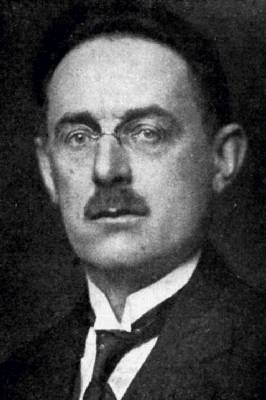16.6. 1877 Archaeologist and researcher Karel Absolon was born
Categories: Personalities , Calendar
 His team discovered the famous Venus of Věstonice. Karel Absolon was born on June 16, 1877. He is one of the most important figures in pre-war science and European archaeology.
His team discovered the famous Venus of Věstonice. Karel Absolon was born on June 16, 1877. He is one of the most important figures in pre-war science and European archaeology.
Karel Absolon is considered by some to be the most important archaeologist and speleologist, as well as the first modern popularizer of science. He was born in Boskovice. His grandfather was the physician, archaeologist and speleologist Jindřich Wankel, from whom he inherited not only a love of science and the underground, but after his death in1897, he also inherited a rich archive of maps of caves unknown to the public and notes suggesting where to look for other underground routes.
Already during his gymnasium studies he continued his work and at the same time found the support of the owner of most of the karst - the priestess Eleonora Salmová. After graduating from the grammar school in Brno, he studied at the Faculty of Philosophy of Charles University in Prague and continued his caving work. In the beginning he was interested in cave fauna, but he was most attracted by the exciting and often risky search for new underground spaces.
He made several expeditions with friends to the bottom of the Macocha Abyss. "From there he tried to penetrate upstream and downstream of the underground river Punkva into unknown caves - at that time still in vain. He also discovered the continuation of the Katerina Cave and the dry part of the Punkva Caves. He often came across remains of ancient times such as skeletons of dead animals and campsites of prehistoric hunters. He also became interested in paleontology and archaeology. He published in national and international journals. In 1927 he became a professor," writes Jan A. Novák in his book The Hidden Personalities of Czech History.
The peak of Absolon's research career falls in the period of the First Republic. In the Moravian underground he concentrated mainly on the discovery of the lower Punkva between Macocha and its outlet. The key for him was a letter from the Viennese professor J. Bayer, who pointed out Freising's successful soundings in the hitherto untouched Dolní Věstonice. It was in the upper part of the prehistoric site between Dolní Věstonice and Pavlov that Absolon's team found the famous Věstonice Venus on 13 July 1925.
"It is unique in that it was kneaded from a special modeling material, meeting...made of crushed mammoth clay and fat and is one of the earliest examples of prehistoric pottery. Several prehistoric shelters, a clay oven and a large quantity of "Jiří Glet writes in his book Mysterious and Interesting Places in Moravia and Silesia.
Absolon retired at his own request in November 1938. His archaeological collections also suffered a sad fate. Scientists tried to hide them from bombing in the Mikulov castle, which burned down in April 1945 under unclear circumstances. The Venus of Věstonice was saved only by great chance. In the same year Absolon tried to resume his pre-war activities, but soon found that even in the new state it would not be easy.
"The successes and popularity of the pre-war era were not afforded him by many of his colleagues, and he was condemned to merely organizing his manuscripts, a goodly portion of which disappeared after his death. Absolon died on 6 October 1960," concludes Jan A. Novák.
Sources. Utajené osobnosti českých dějin, Jiří Glet: Mysterious and Interesting Places in Moravia and Silesia, https://cs.wikipedia.org/
The article is included in categories: